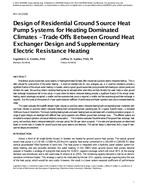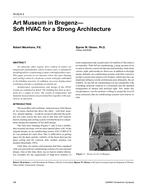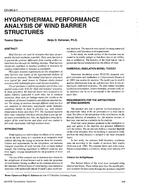In the area of large volume air cleaning, existing literature concluded that it was impractical using cyclones to achieve a particle cut size smaller than 10 mm. Particle cut size refers to the particle diameter at which the collection efficiency is 50%. Cyclone technology has been limited to use for small volume air sampling or large particle separation (typically larger than 25 mm in diameter). This paper reexamines the existing cyclone theory and particle separation in a centrifugal field. Particle separation efficiency under laminar and perfect mixing flow conditions was analyzed and equations were developed. These separation efficiency equations define the range of particle separation efficiency for a given design. The equations were validated using a uniflow deduster—a low-pressure uniflow cyclone type particle separation device. The particle cut size of the deduster was 4 mm at a pressure drop of 100 Pa (0.4 in. water) and a flow rate of 135 L/s. Effects of other forces involved in the particle separation process, such as electrostatic and diffusive forces, are discussed after comparing the models and the experimental data.
Units: Dual
Citation: Symposium, ASHRAE Transactions, vol. 109, pt. 2, Kansas City, 2003
Product Details
- Published:
- 2003
- Number of Pages:
- 7
- File Size:
- 1 file , 1.1 MB
- Product Code(s):
- D-20886


